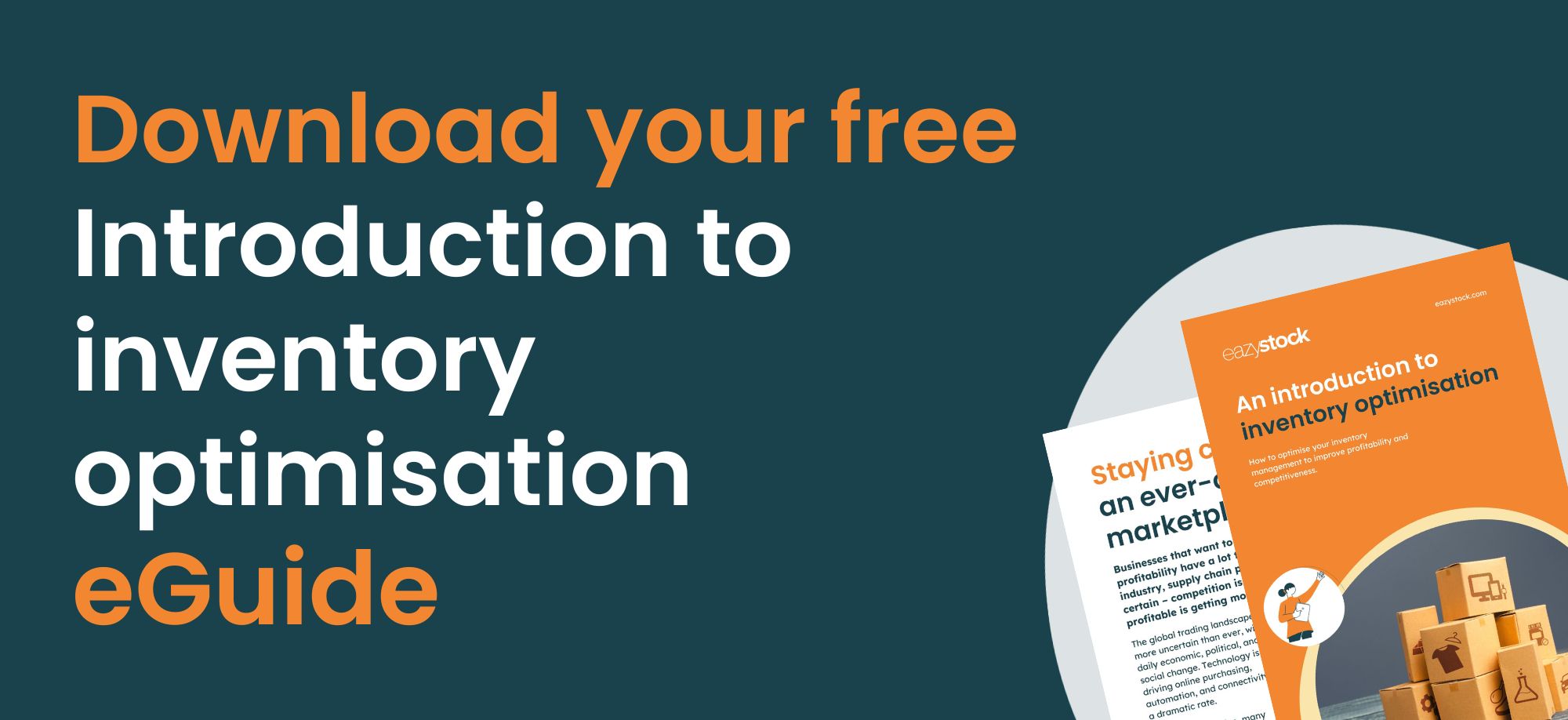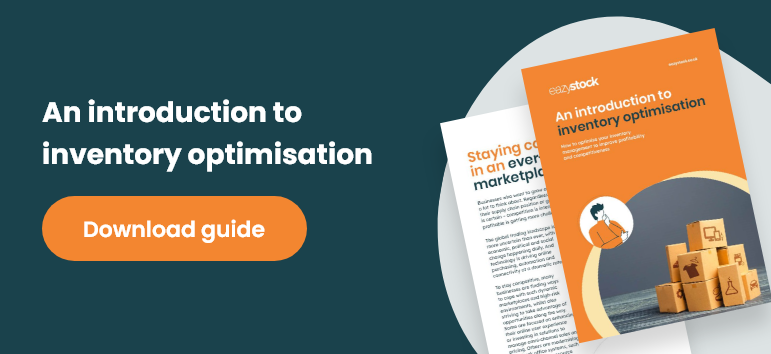What are the disadvantages of excess inventory?
Inventory is pivotal to business success. Without it, you can’t provide the items your customers need, and you’ll probably go out of business pretty quickly.
Understanding the right amounts of inventory to hold can be tricky. If you don’t have enough, you risk stockouts and missed sales, so holding large quantities can be tempting to ensure you don’t run out. However, this can lead to excess inventory, which is also a problem.
This blog explores the disadvantages of excess inventory and how to avoid them.
What is excess inventory?
Excess inventory is what is left once you have met customer demand. If there is no demand for the items within a reasonable period, they become surplus to requirements and known as excess inventory. This leads to an unintentional stock build-up in the warehouse.
There are several reasons you might end up with excess inventory, for example:
- Inaccurate demand forecasts that overestimate what is needed.
- Poor purchasing decisions.
- Changes in trends or customer needs.
Holding too much of certain stock items can cause operational challenges and financial constraints.
Is excess stock the same as safety stock?
Some people believe that carrying excess inventory helps businesses respond quickly to customer orders and reduce the risk of stockouts. While carrying some additional stock to cover unexpected demand makes sense, there’s a balance between excess stock and extra or safety stock.
While excess stock is surplus to requirements, safety stock (buffer stock) is a calculated amount above forecasted demand that considers supply chain variables to cover instances such as unexpected peaks in sales or supplier delays. Calculating appropriate safety stock levels reduces the risk of filling warehouses with excess stock.
We explain more about how to improve stock availability without carrying excess stock and calculating safety stock in our blog posts.
What are the disadvantages of holding too much stock?
As we just discussed, holding excess inventory might seem like a good idea to help meet unexpected demand, but that comes at a cost. Let’s look at the four main disadvantages of excess inventory.
Excess inventory ties-up much-needed working capital
Without good cash flow, businesses can struggle to pay employees, to pay debts and even to stay trading. Excess stock is a major culprit for sucking up working capital and reducing available cash flow. Think of all the cash tied up in stock items sitting in your warehouse with very little or volatile demand. Your money is being wasted on stock won’t generate a return in revenue.
Even if they are sold, it’s likely to be at a heavy discount, or they could be written off completely, impacting revenue further.
If you tie up your cash in inventory, consider the opportunity costs you incur. Opportunity costs are other business activities you could have invested in instead of the excess stock. For example, by tying up most of your cash in inventory, you lose the opportunity to invest in other business areas, such as marketing activity, new machinery, or increasing your workforce.
Excess inventory increases carrying costs
As well as tying up cash, excess inventory also increases carrying costs. Carrying costs are costs associated with storing inventory in your warehouse and include these elements:
- Capital costs are the most significant cost, which includes everything related to your investment in buying the stock, e.g. the cost of the stock, interest on working capital and opportunity cost.
- Storage space costs combine warehouse rent or mortgage and maintenance costs, such as lighting, heating and air conditioning.
- Service costs: include insurance, security, IT hardware and the cost of physically handling the goods.
- Inventory risk costs: the risk that items might fall in value over the period they are stored, shrinkage and the risk that they become obsolete.
Many of these costs are not obvious or might seem insignificant, but if you have lots of excess stock, they can add up and chip away at your inventory’s profitability.
Excess inventory can lead to poor-quality goods and degradation
If you’ve got high levels of excess stock, the chances are you have low inventory turnover, which means you’re not turning all your stock regularly. This could begin to deteriorate or perish, making it unsellable. Businesses often sell off perishable or sub-standard stock at lower prices to prevent throwing it away and losing its value completely. Discounting or disposing of stock together can significantly impact your business’s profitability.
Excess inventory can result in stock obsolescence
The reasons for excess inventory usually include poor forecasting and purchasing, e.g. you’ve over-projected your demand or bought too many of the wrong items. If demand for those items hits zero for a prolonged period, you could end up with obsolete inventory. This could be due to updated models or versions, new technology, or changing consumer trends and fashions.
As with sub-standard stock, obsolete stock is bad news for profitability. Trying to sell items with no demand will be challenging, even at a heavily discounted rate. It’s likely they will be written off altogether.
Overcoming excess inventory
If you have excess stock, you must act fast to prevent it from becoming obsolete. We share some easy-fix solutions on how to reduce excess inventory in our blog. Prevention is better than cure, so ensure you review your forecasting and inventory replenishment planning processes. Implementing effective and efficient demand forecasting techniques, setting reasonable safety stock levels and having the correct reorder levels will help avoid excess inventory.
Using an enterprise resource planning (ERP) or warehouse management system (WMS) to manage your inventory is a good starting point. However, when you are tracking and managing lots of SKUs that could be affected by seasonality, or erratic demand, their functionality may not be enough.
EazyStock cloud-based inventory optimisation software will enhance the capabilities of your current inventory management system. EazyStock uses statistical demand forecasting to calculate your reordering requirements automatically. It also dynamically adjusts reorder points and reorder quantities based on any changes in demand or to account for supply variables, such as longer lead times or minimum or maximum order quantities.
With EazyStock you can easily check the status of your items to see which are healthy (you have enough inventory on hand to cover demand), excess (you need to adjust purchasing parameters to lower their stock levels) and at risk of run out (so you can place recommended orders as soon as possible).
If you’d like an insight into the current health of your stock, contact us for a Stock Health Analysis. We’ll segment your inventory into healthy, excess and obsolete stock, and provide a list of actions for improvement. You can also arrange a demo here.











